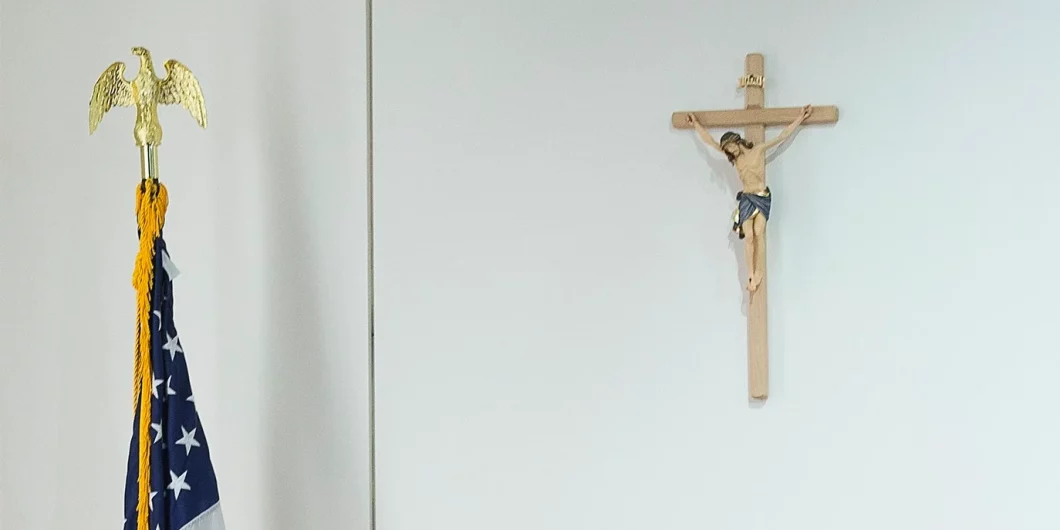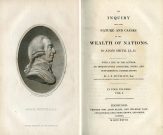The roots of Western liberalism both precede, and go far deeper, than Martin Luther and his influence.
Why Liberalism and Constitutionalism Need Christianity
Liberalism and constitutionalism need Christianity. This is a provocative thesis, and one that challenges many current narratives. In what sense can this be true?
There is no point in attempting here an authoritative definition of “liberalism.” It is, among other things, a “political doctrine that takes protecting and enhancing the freedom of the individual to be the central problem of politics”; a “political and moral philosophy based on the rights of the individual, liberty, consent of the governed, political equality and equality”; an “ideology committed to the individual and a society in which individuals can pursue and realize their interests”; a “philosophy that starts from a premise that political authority and law must be justified”; and so on.
“Liberalism” comes in a wide variety of shades and flavors; scholars disagree—indeed, “liberals” disagree—about its foundations, premises, content, and implications. This variation complicates recent efforts to determine and explain “why liberalism failed” or to develop proposals for “post-liberalism.” Liberalism comes in more, or less, “comprehensive” varieties; it can be “thicker” or “thinner”; it can be more or less “perfectionist”; it can be more or less “pluralist”; it has “left” and “right” varieties; it can “cash out”, policy-wise, in a wide range of ways. Conversations about “liberalism” will generally encompass “the rule of law,” private ordering, some hesitation regarding legal moralism, reasonably regulated market economies, free trade and movement, church-state differentiation, and so on but—again—the specifics can and do vary.
William Galston has argued that the “liberal” tradition “contains two distinct strands of thought: One emphasizes the principle of autonomy, while the other stresses the principle of diversity.” These principles, he notes, are in tension with each other. One strand might tend to de-emphasize, and even dissolve, the ties between persons and authority-carrying associations (especially “unchosen” ones), while the other might focus precisely on creating and protecting space for these associations to flourish.
In any event, for present purposes, the suggestion is that “liberalism” is best understood as encompassing commitments to both liberty and limits. More precisely, liberalism aims at liberty, but it achieves it (when it does), perhaps paradoxically, through—and its success depends on—limits.
Constitutionalism
Defining “constitutionalism” is similarly challenging. A quick-and-dirty effort might be, as I have written elsewhere, “constitutionalism is the enterprise of protecting human freedom and promoting the common good by categorizing, separating, structuring, and limiting power in entrenched and enforceable ways.” For some, though not for all, it is essential to this enterprise that it happens in and through writing. Walton Hamilton, for example, said that “constitutionalism is the name given to the trust which men repose in the power of words . . . to keep a government in order.” Charles McIlwain, though, was even more succinct: “Constitutionalism,” he said, “has one essential quality: it is a legal limitation on government.”
Another, perhaps less appreciated, but still essential, feature of constitutionalism is that the enterprise is animated by an appreciation for the fact that the authority of government, which is limited legally—maybe in writing, maybe not—by the constitution, is not the only authority at work in human society and affairs. As Harold Berman put it, “the most distinctive characteristic of the Western legal tradition is the coexistence and competition within the same community of diverse jurisdictions and diverse legal systems. “It is,” he continued, “this plurality of jurisdictions and legal systems that makes the supremacy of law both necessary and possible.” This pluralism, Berman thought, has nurtured legal, political, and economic growth. It also both reflects and protects political and other freedoms.
Great legal historians like William Maitland and Henry Maine also appreciated the fact that distinctions and competition among plural authorities have been and remain crucial to constitutionalism’s success. And so, they would say, a regime that concentrates authority in any one place—the state, the church, the market, the mob—and suppresses it elsewhere is not really an authentic constitutional regime. Nor, I think, would it be “liberal.”
To say, with the Jacobins, that “there can be no rights except the right of the State, and . . . there can be no other authority than the authority of the Republic” is, it would seem, to reject both constitutionalism and liberalism, correctly understood. Rousseau’s assertion that “a democratic society should be one in which absolutely nothing stands between man and the state,” like his contention that non-state authorities and associations should be proscribed, was both deeply anti-constitutional and profoundly illiberal.
The Constitution of the United States, on the other hand—for all its flaws and foibles—does better. As we should hope every law student learns, those who designed and ratified the Constitution understood and embraced the idea that political liberties are best served through competition and cooperation among plural authorities and jurisdictions, and through structures and mechanisms that grant, arrange, structure, check, diffuse, divide, and limit political power. Our Constitution is more than a litany of prohibitions or a catalogue of individual rights. Our constitutional law is, at bottom, “the law governing the structure of, and the allocation of authority among, and the extent of the reach, of the various institutions of government.”
And our constitutional experiment reflects, among other things, the belief that the structure of government matters for, and contributes to, the good of human persons. “The constitutionally mandated division of authority,” Chief Justice Rehnquist once wrote, “was adopted by the Framers to ensure protection of our fundamental liberties.” Indeed, “the promise of liberty,” Justice O’Connor suggested, lies in this “tension between federal and state power.” The “[s]eparation of powers,” in other words, “was designed to implement a fundamental insight: Concentration of power . . . is a threat to liberty.”
Both liberalism and constitutionalism involve tensions—tensions between liberty and limits, and tensions between the paired aims of empowering and constraining political authority.
One could go on and on, of course, gathering observations by Madison and Montesquieu, Tocqueville, and Tiebout; expounding on “checks and balances,” subsidiarity, localism, and pluralism; and compiling imposing citation lists in support of the proposition that our Constitution was designed to protect individual liberty by dividing, enumerating, and reserving governments’ powers and authority. There is no need, however, to belabor even a point as fundamental as this one: “The genius of the American Constitution”—of American constitutionalism—“lies in its use of structural devices to preserve individual liberty.” Like “liberalism”, then, “constitutionalism” can be seen as promising liberty through limits.
Christianity
What, then, does Christianity have to do with these claims and characterizations? Again, the suggestion is that “liberalism” and “constitutionalism” rely for their success, both in theory and in fact, not only on the separation and limitation of the powers of the political authority, but also on the existence and the health of authorities and associations outside, and meaningfully independent of, the state. As I and many others have argued, our tradition of constitutionalism was made possible, and might still depend today, on the independence of the church from secular control, an independence that it is fair to say Christianity first proposed and insisted upon.
The “distinction,” as Pope Benedict XVI put it, “between what belongs to Caesar and what belongs to God (cf. Mt 22:21)” is “fundamental to Christianity.” It is this core tenet of Christian political theology—the differentiation between “church” and “state,” along with the freedom of the former and the limits on the latter—on which, it seems to me, both liberalism and constitutionalism depend. This differentiation, the late pope contended, “came into the world first through Christianity. Until then,” he observed, “the political constitution and religion were always united. It was the norm in all cultures for the state to have sacrality in itself and be the supreme protector of sacrality.” Christianity, however, “deprived the state of its sacral nature.”
Again: constitutionalism and liberalism—and liberal constitutionalism—need Christianity. Indeed, the “separation” between church and state that has long been treated, with more or less care, as a foundation of the American law of church and state is better regarded as a limit imposed by the former on the latter than vice-versa. Correctly understood—and, to be sure, it often is not—this “separation” stands as a safeguard against governments tempted to assume for themselves the power to direct religious life. It is a limit on government and such limits, again, are essential to liberal constitutionalism. Our Constitution separates church and state to curb the ambitions and reach of governments. In and through our constitutionalism, “Caesar recognizes that he is only Caesar and forswears any attempt to demand what is God’s.” The differentiation between religious and political authority means that Christianity is not merely a recipient of constitutional protection; it is a safeguard for the enterprise of constitutionalism.
Both liberalism and constitutionalism involve tensions—tensions between liberty and limits, and tensions between the paired aims of empowering and constraining political authority. Christianity, and the dualistic claim at the heart of Christian political theology, is well suited—maybe uniquely so—to provide these limits. Liberalism, after all, is hospitable to temptation, as Patrick Deneen and others have reminded us, to comprehensiveness, to boundary-crossing, to a disregard of limits. This is a temptation to insist on congruence, and to—ironically, perhaps—rely on state power to guarantee, at the expense of non-state associations and authorities, the liberty it promises.
Philip Hamburger examined closely this temptation, and the tools—indeed, the new “pathways of power”—that governments employ when indulging it, in his recent book, Purchasing Submission. Among other things, he argues that a certain kind of comprehensive, impatient-with-limits liberalism is subtly undermining constitutionalism. Bit by bit, using the soft power of carrots and sticks, conditions and concessions, this statist version of liberalism picks away at the forms, boundaries, rivals, and authorities—including, especially, religious institutions, associations, and communities—that would complement, but also check, its reach. In this way, liberalism not only undermines constitutionalism and Christianity but also itself.
An early version of this paper was presented on November 11, 2022, at Notre Dame Law School, at a symposium on “Liberalism, Christianity, and Constitutionalism” hosted by the Notre Dame Law Review and Emory University’s Center for the Study of Law and Religion.


